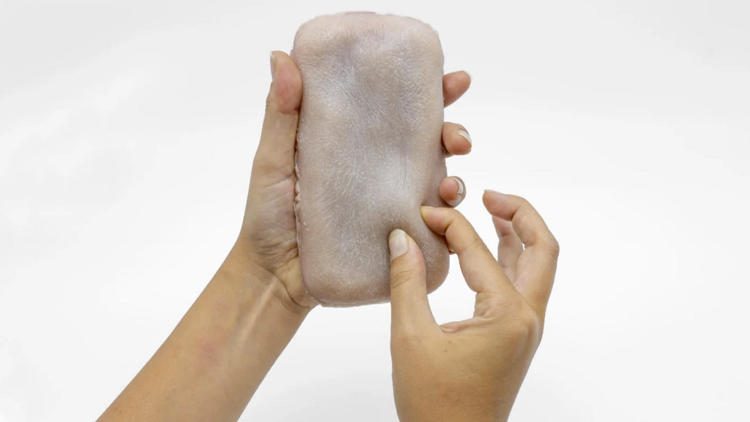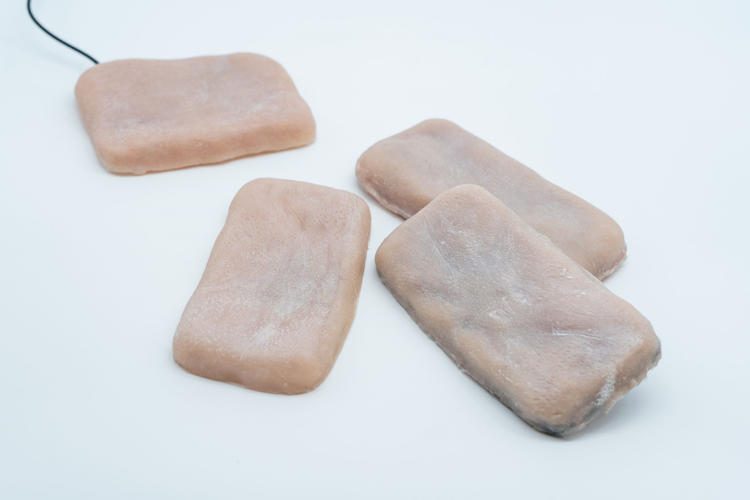A team of French and English researchers recently showcased a prototype phone case called Skin-On, which not only mimics the look and feel of human skin, but also enables interaction communication through gestures like pinching or tickling.
Developed by researchers at the University of Bristol in partnership with Telecomm ParisTech and Sorbonne University, Skin-On consists of a layer of stretchable copper wire in between two different forms of silicone layers. The materials are mass-produced, and the creators of Skin-On claim that the cost of a commercial version of the case would be around $6.5. While anyone could build it, project leader Marc Teyssier admitted that finding the right balance to create what is essentially artificial skin was challenging, considering the case was also supposed to detect touch. But why bother making a smartphone case that everyone generally agrees is “decidedly creepy”. Dr Anne Roudaut, Associate Professor in Human-Computer Interaction, explains:

“This is the first time we have the opportunity to add skin to our interactive devices. The idea is perhaps a bit surprising, but skin is an interface we are highly familiar with so why not use it and its richness with the devices we use every day?”
Skin-On not only feels more natural than a rigid smartphone case, but it can also detect certain gestures, which makes it that much creepier. According to a paper published by its creators, the case essentially allows devices to ‘feel’ the user’s grasp, as well as various gestures, such as tickling, pinching or caressing. “We implemented a messaging application where users can express rich tactile emotions on the artificial skin. The intensity of the touch controls the size of the emojis. A strong grip conveys anger while tickling the skin displays a laughing emoji and tapping creates a surprised emoji,” Marc Teyssier explained.

Although the artificial skin case already feels eerily human-like to the touch, researchers are now exploring new ways to “increase anthropomorphism”. They want to implement hair and a temperature feature that could be enough to give our handhelds goosebumps in certain conditions.
“This work explores the intersection between man and machine. We have seen many works trying to augment human with parts of machines, here we look at the other way around and try to make the devices we use every day more like us, i.e. human-like,” Dr. Roudaut concluded.
There are no plans to market the Skin-On smartphone case for now, but who knows what the future holds…






